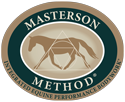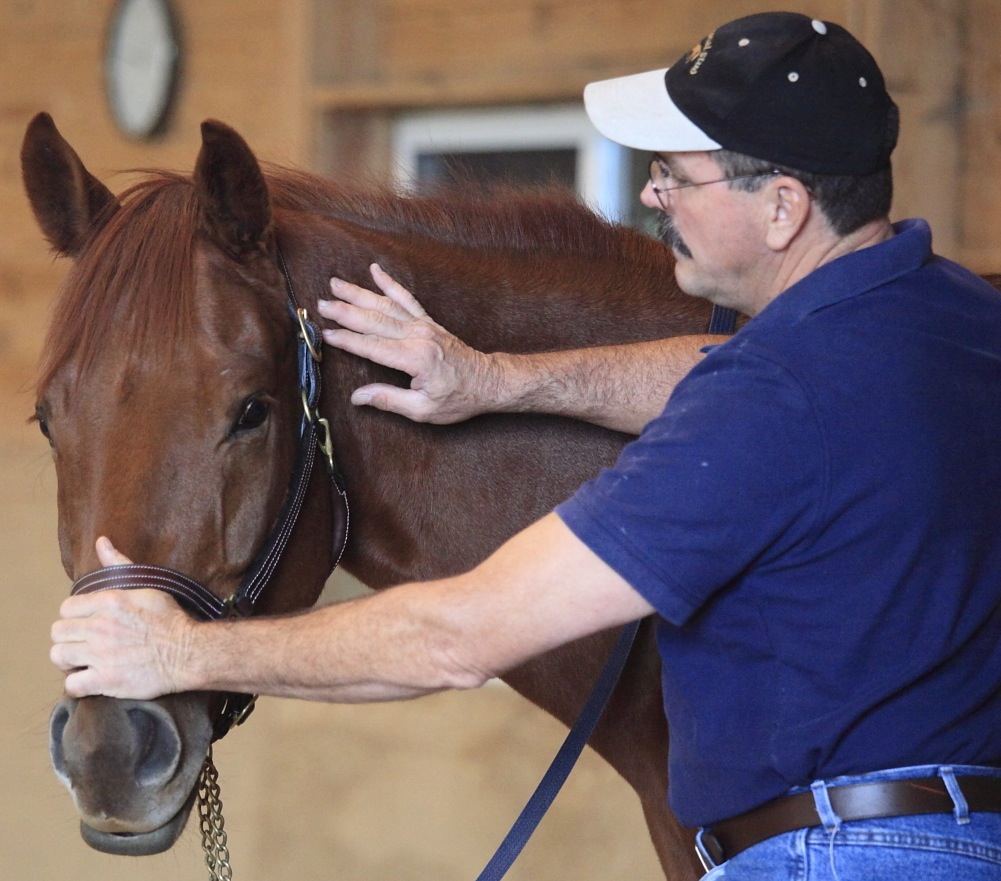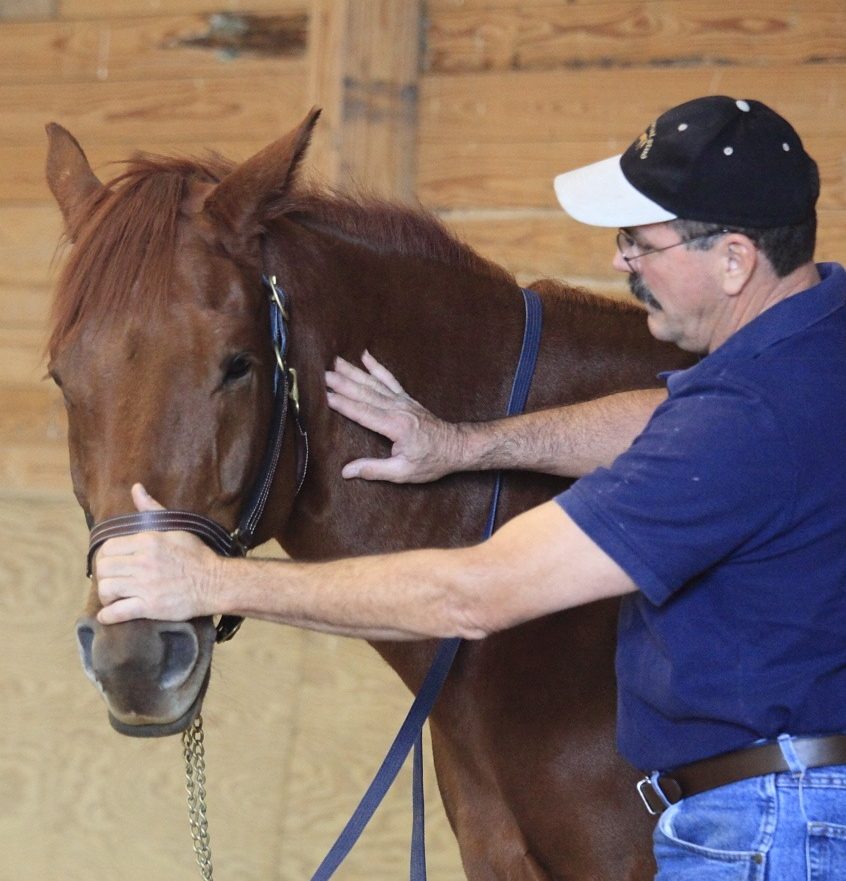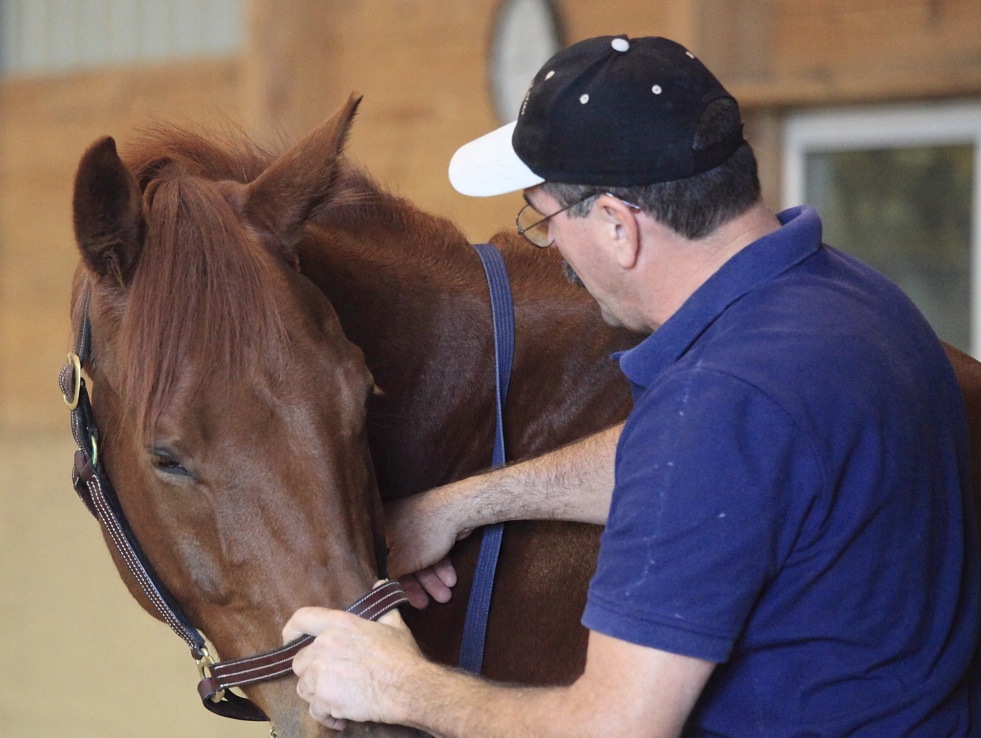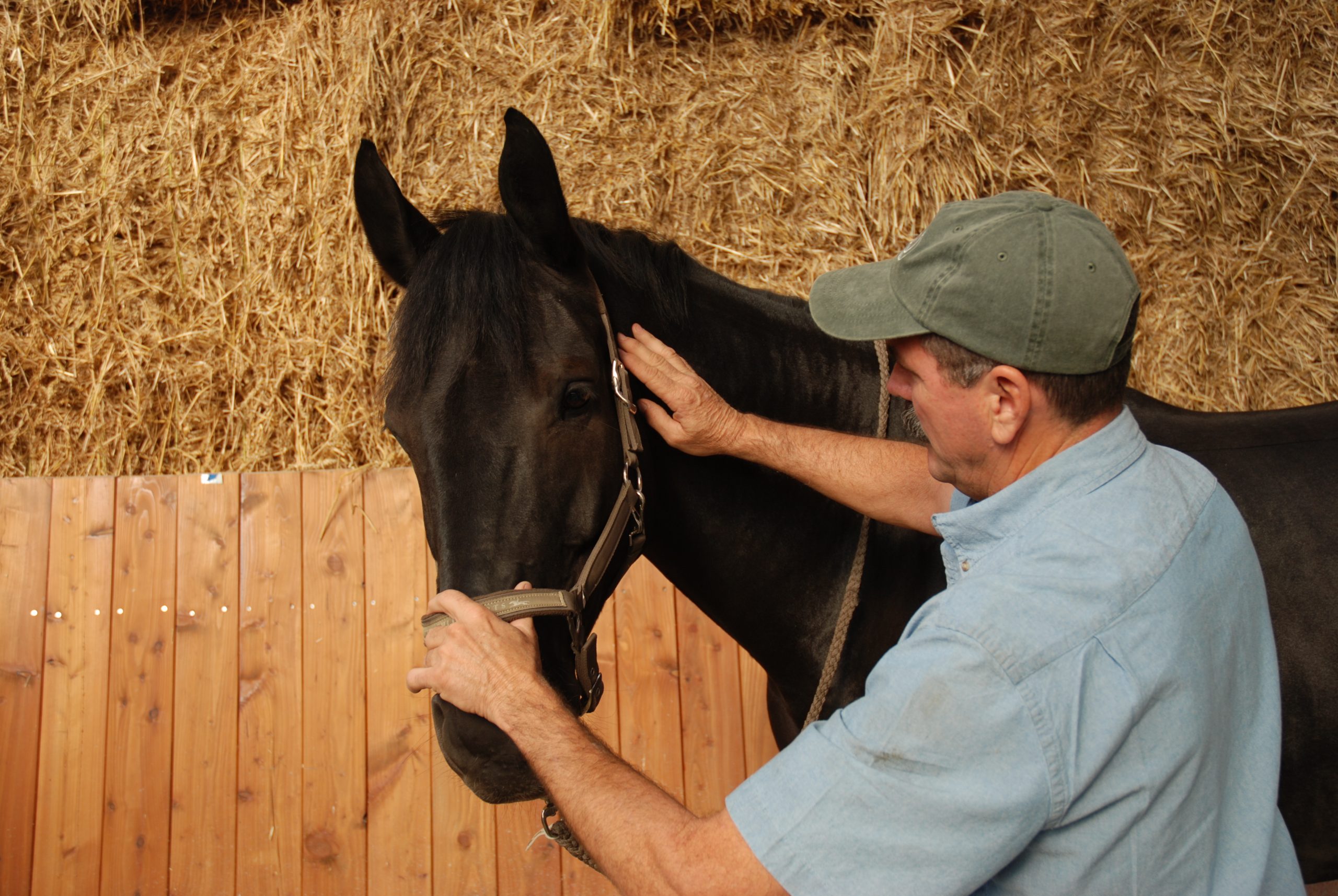Purpose: To begin the process of releasing tension in the poll/atlas junction and to improve comfort and range of motion in the poll, atlas, and neck.
Goal: To ask for gentle movement of the poll and neck with the muscles in a relaxed state. This is done by using the nose to wiggle each vertebra of the neck—C1 through C7—while keeping the horse as relaxed as he can be.
**When you move a joint or junction through a range of motion—even a tiny range of motion—in a relaxed state, tension in the connective tissue of and around that joint or junction will release.
